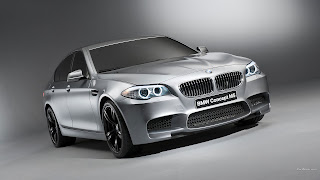The Audi R8 (Typ 42) is a mid-engine, 2-seater sports car,which uses Audi's trademark quattro permanent all-wheel drive system. The Audi R8 is fitted with 6-arm 18-inch wheels as standard, and can optionally be ordered with 19-inch wheels. The 235/40 size tires at the front and up to 285/35 at the rear provide the necessary road-holding. The mid-engined sports car's long wheelbase and extremely low center of gravity ensure that it always retains maximum stability.
The R8 is due to be replaced with a brand new model in calendar year 2014.[11] The highest output version of Audi's new 4.0 liter V8 twin-turbocharged engine is expected to power the new car. This engine is scheduled to be previewed as a detuned version in the 2012 Audi S8—with 518 hp (386 kW) on tap.[citation needed] In the R8 application it is expected to produce about 600 hp. Combined with an approximate 200 lb (91 kg) weight loss, the new R8 is expected to compete well with the new Porsche 997 twin turbo model and will likely perform significantly better than the current R8 GT with a 0–60 mph time in 3.2 seconds and a quarter mile in less than 11 seconds. A dual clutch automated gearbox will be offered for the first time.
The R8 is due to be replaced with a brand new model in calendar year 2014.[11] The highest output version of Audi's new 4.0 liter V8 twin-turbocharged engine is expected to power the new car. This engine is scheduled to be previewed as a detuned version in the 2012 Audi S8—with 518 hp (386 kW) on tap.[citation needed] In the R8 application it is expected to produce about 600 hp. Combined with an approximate 200 lb (91 kg) weight loss, the new R8 is expected to compete well with the new Porsche 997 twin turbo model and will likely perform significantly better than the current R8 GT with a 0–60 mph time in 3.2 seconds and a quarter mile in less than 11 seconds. A dual clutch automated gearbox will be offered for the first time.



















































